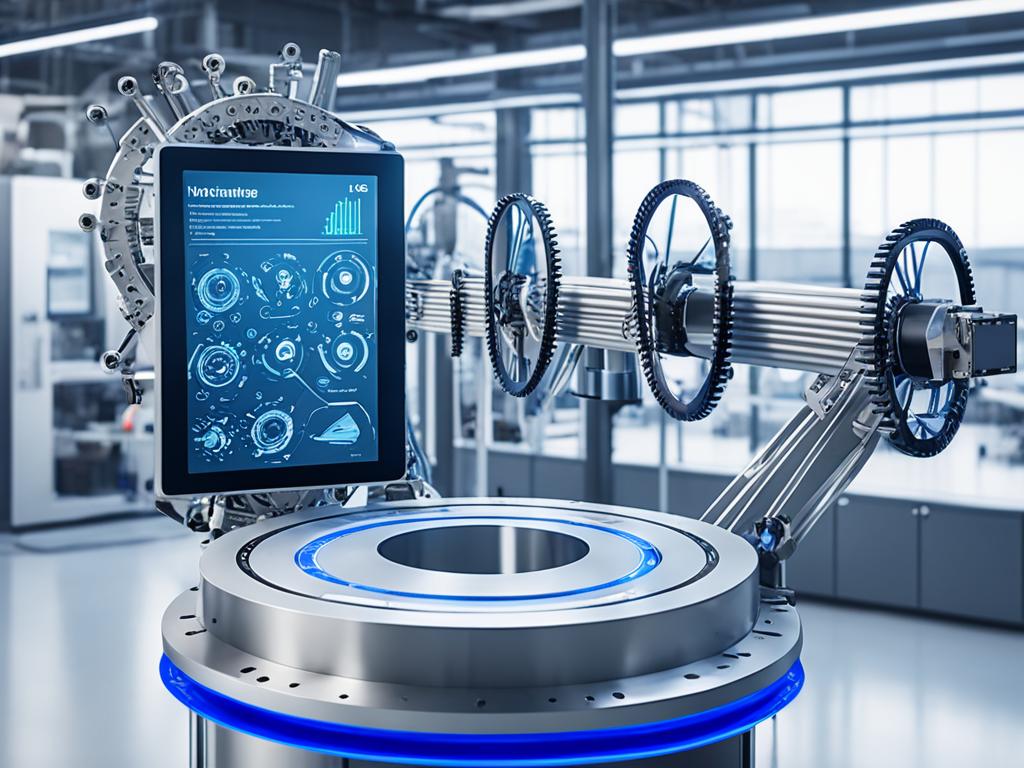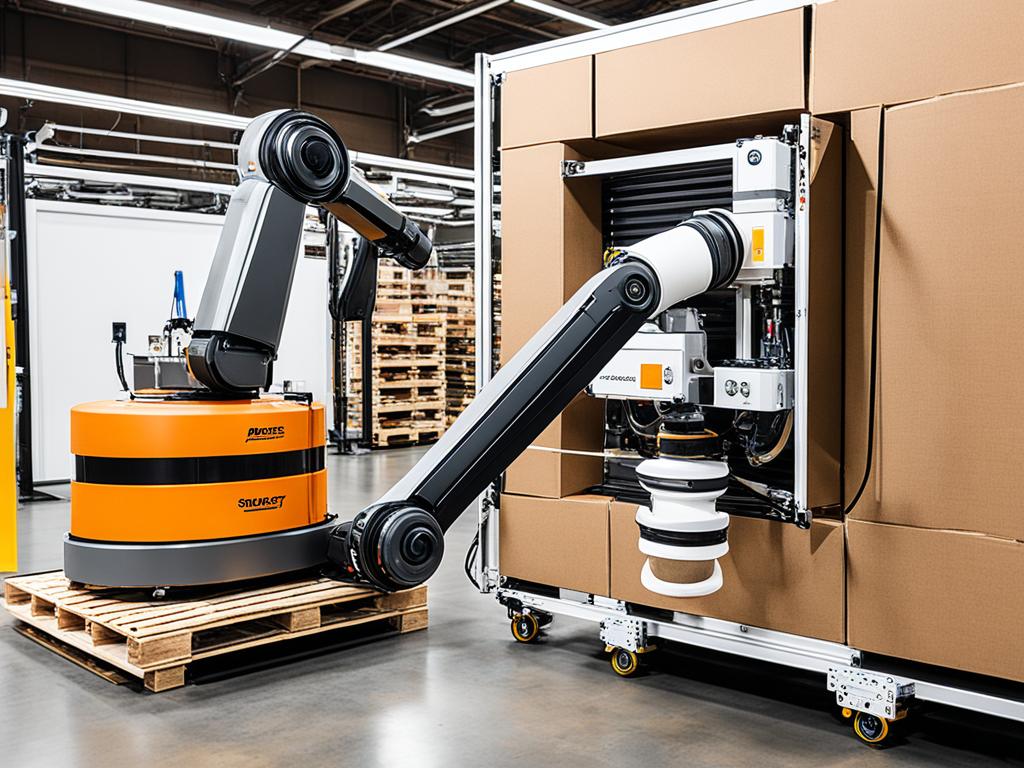 Introducing a new way to revolutionize the manufacturing industry with the latest technologies: rotary torque sensor and environmentally friendly pallet wrap. These innovative solutions are paving the way for more efficient and sustainable manufacturing processes.
Introducing a new way to revolutionize the manufacturing industry with the latest technologies: rotary torque sensor and environmentally friendly pallet wrap. These innovative solutions are paving the way for more efficient and sustainable manufacturing processes.
When it comes to precision and performance in the automotive industry, rotary torque sensors are making their mark. Developed by NSK, the compact and cost-effective torque sensors are perfect for mass production, making them an ideal choice for automakers. These sensors offer a range of benefits, from increased fuel economy to improved ride comfort and safety. By reducing power consumption and softening torque fluctuations during gear shifts and acceleration, these sensors enhance fuel efficiency and elevate the overall driving experience. Moreover, they enable early detection of abnormalities, ensuring timely maintenance and repairs, ultimately leading to longer vehicle lifespan.
On the other hand, environmentally friendly pallet wrap is transforming the packaging process. Let’s take a closer look at X-Stretch film, a sustainable choice that offers better unitizing and consistent wrapping patterns. This breakthrough technology not only speeds up the packaging process but also ensures the safety of products during transportation. By pre-stretching the film by 250%, it creates increased tensioning forces, resulting in better unitizing of pallet loads. With programmable wrap parameters, the X-Stretch film ensures precise wrapping patterns that meet specific load requirements, optimizing time and resources. By choosing sustainable pallet wrap, businesses can reduce packaging expenses and minimize their carbon footprint, contributing to a greener and more eco-friendly future.
As we dive deeper into the advancements of rotary torque sensors and environmentally friendly pallet wrap, we’ll discuss the specific benefits they offer and the positive impact they have on various industries. Stay tuned to discover how these innovative solutions are transforming the world of manufacturing, one step at a time.
Benefits of Rotary Torque Sensors
When it comes to improving vehicle performance and safety, rotary torque sensors offer an array of benefits. These sensors not only contribute to increased fuel economy by reducing power consumption but also enhance ride comfort by minimizing torque fluctuations during gear shifts and acceleration. With their ability to identify abnormalities and issues in vehicles, torque sensors enable timely maintenance and repairs, ensuring optimal performance and reliability.
As connected vehicles become more prevalent, rotary torque sensors play a vital role in gathering data that can provide valuable insights into collective road usage patterns. This data can be used to enhance traffic management, improve road safety, and contribute to the development of innovative solutions that benefit society as a whole. The integration of connected vehicles with torque sensors opens up new avenues for advancements in technology and fosters a more efficient and sustainable transportation ecosystem.

Improving Fuel Economy
By accurately measuring and analyzing torque, rotary torque sensors help optimize power distribution in vehicles, resulting in reduced power consumption and increased fuel efficiency. This not only translates into cost savings for vehicle owners but also reduces dependence on fossil fuels, making the transportation sector more environmentally friendly.
Enhancing Ride Comfort
Torque fluctuations during gear shifts and acceleration can impact the overall ride comfort of a vehicle. Rotary torque sensors, with their ability to detect and mitigate these fluctuations, provide a smoother and more comfortable driving experience. Whether it’s a seamless gear transition or a steady acceleration, these sensors ensure a refined and enjoyable ride.
Identifying Abnormalities
Early detection of abnormalities and issues in vehicles is crucial for proactive maintenance and timely repairs. Rotary torque sensors enable real-time monitoring and analysis of torque data, helping identify potential problems and preventing them from escalating into major issues. This proactive approach reduces downtime, improves vehicle reliability, and increases overall safety on the road.
The benefits of rotary torque sensors extend beyond individual vehicle performance. As connected vehicles become more prevalent, these sensors contribute to a collective understanding of road usage patterns, which can be leveraged to optimize traffic flow, reduce congestion, and enhance overall transportation efficiency. The integration of torque sensors with connected vehicles represents a significant leap towards a more intelligent and sustainable transportation system.
Advantages of Environmentally Friendly Pallet Wrap
Environmentally friendly pallet wrap, such as the X-Stretch film, offers several advantages in the packaging process. It pre-stretches the film by 250%, resulting in better unitizing of pallet loads and increased tensioning forces. This ensures that the pallet loads are tightly secured and prepared for safe transit.
Furthermore, the programmable wrap parameters of machines like Mach 1’s stretch wrap machines enable a consistent wrapping pattern that precisely meets the load requirements. This consistent wrapping ensures that the pallet loads are properly protected from external factors, such as moisture and dust, while minimizing the risk of load shifting during transportation.
By using environmentally friendly pallet wrap and sophisticated wrapping machines, businesses can significantly streamline their packaging processes. The faster and safer wrapping process allows companies to get their products out the door more efficiently, meeting tight delivery schedules and optimizing their labor force.
Additionally, these innovative pallet wraps contribute to sustainable packaging practices. By reducing packaging expenses through better unitizing and consistent wrapping patterns, businesses can optimize their labor force and allocate resources more effectively. This not only saves costs but also promotes a smaller carbon footprint, aligning with the increasing demand for environmentally conscious practices in the industry.
Overall, the advantages of using environmentally friendly pallet wrap, such as better unitizing, consistent wrapping patterns, out the door faster and safer, and optimized labor force, make it a compelling choice for businesses aiming to improve their packaging efficiency and reduce their environmental impact.
Design Principles of Sustainable Soft Actuators
Sustainable soft actuators are at the forefront of eco-friendly technology development. These innovative devices play a crucial role in reducing environmental impact by incorporating design principles that prioritize sustainability and resource conservation.
One key aspect of sustainable soft actuators is the careful selection of materials. By choosing sustainable options, such as bioplastics or biocompatible polymers, manufacturers can minimize the use of non-renewable resources and reduce material consumption.
Energy efficiency is another critical consideration in the design process. Soft actuators can be engineered to consume minimal power while delivering optimal performance. This not only enhances their overall efficiency but also contributes to energy conservation and lower carbon emissions.
Biodegradability is an essential characteristic of sustainable soft actuators. Researchers are actively exploring and developing materials that can naturally decompose at the end of the actuator’s lifespan, ensuring minimal environmental impact and reducing waste accumulation.
In addition to material choices, the manufacturing processes employed for soft actuator production also play a significant role in sustainability efforts. Energy-efficient processes that minimize waste production and optimize resource utilization contribute to the overall environmental friendliness of sustainable soft actuators.
By adhering to these design principles, sustainable soft actuators pave the way for a more sustainable future, promoting energy efficiency, reduced material consumption, and biodegradability.

Challenges and Opportunities in Sustainable Soft Actuator Design
The field of sustainable soft actuators has made significant strides in recent years. However, there are still challenges that need to be addressed in the quest for more environmentally friendly designs. One of these challenges is ensuring durability. Soft materials used in these actuators are often susceptible to wear and tear, which can limit their lifespan. To overcome this, researchers and engineers must focus on developing actuators that are not only sustainable but also long-lasting and capable of withstanding repeated use.
Another hurdle to overcome is the lack of a standardized framework for designing sustainable soft actuators. Without a common framework, it becomes difficult to compare different designs and assess their environmental impact accurately. Establishing a standardized framework would enable researchers and manufacturers to collaborate more effectively, share best practices, and drive innovation in sustainable soft actuator design.
A holistic lifecycle approach is crucial for achieving sustainability in soft actuator design. This means considering the entire lifecycle of the actuator, from its production and use to its disposal or recycling. Easy disassembly and recyclability should be key design considerations to minimize waste generation and maximize resource efficiency. By adopting a holistic lifecycle approach, sustainable soft actuators can contribute to a circular economy, minimizing environmental impact throughout their lifespan.
One exciting opportunity for sustainable soft actuator design lies in multi-material printing. This innovative technique enables the creation of complex actuator structures using multiple materials with different properties. By carefully selecting and combining materials, it becomes possible to optimize performance, reduce waste, and enhance sustainability efforts. Multi-material printing opens up new possibilities for creating soft actuators that are not only environmentally friendly but also highly functional and efficient.
In today’s rapidly evolving industrial landscape, technological innovation and a steadfast commitment to sustainability are fundamentally transforming industry standards. The integration of advanced tools such as rotary torque sensors has revolutionized precision in manufacturing processes, while the adoption of environmentally friendly pallet wrap signifies a broader shift towards eco-conscious production practices. These advancements not only enhance operational efficiency but also reflect a deepening resolve to mitigate environmental impact.
However, as industries pivot towards these new paradigms, the complexity of legal compliance in manufacturing and environmental protection intensifies. It underscores the critical need for expertise in navigating the intricate legalities that govern these areas. This is where the invaluable role of employment lawyers near me becomes apparent, offering guidance and ensuring adherence to the ever-changing legal landscape. Their expertise ensures that companies not only thrive through innovation but do so within the legal frameworks that safeguard our planet and its people.
